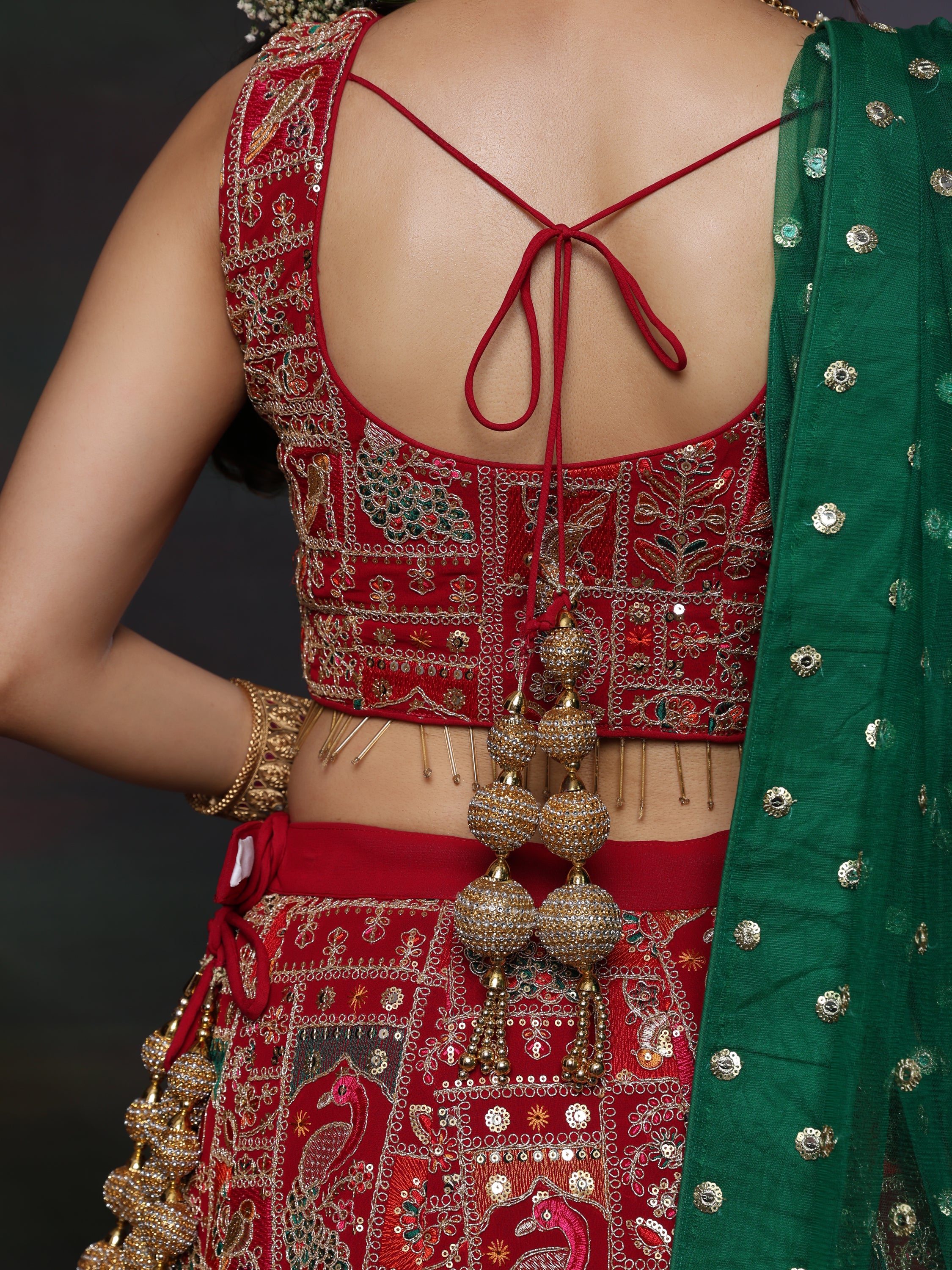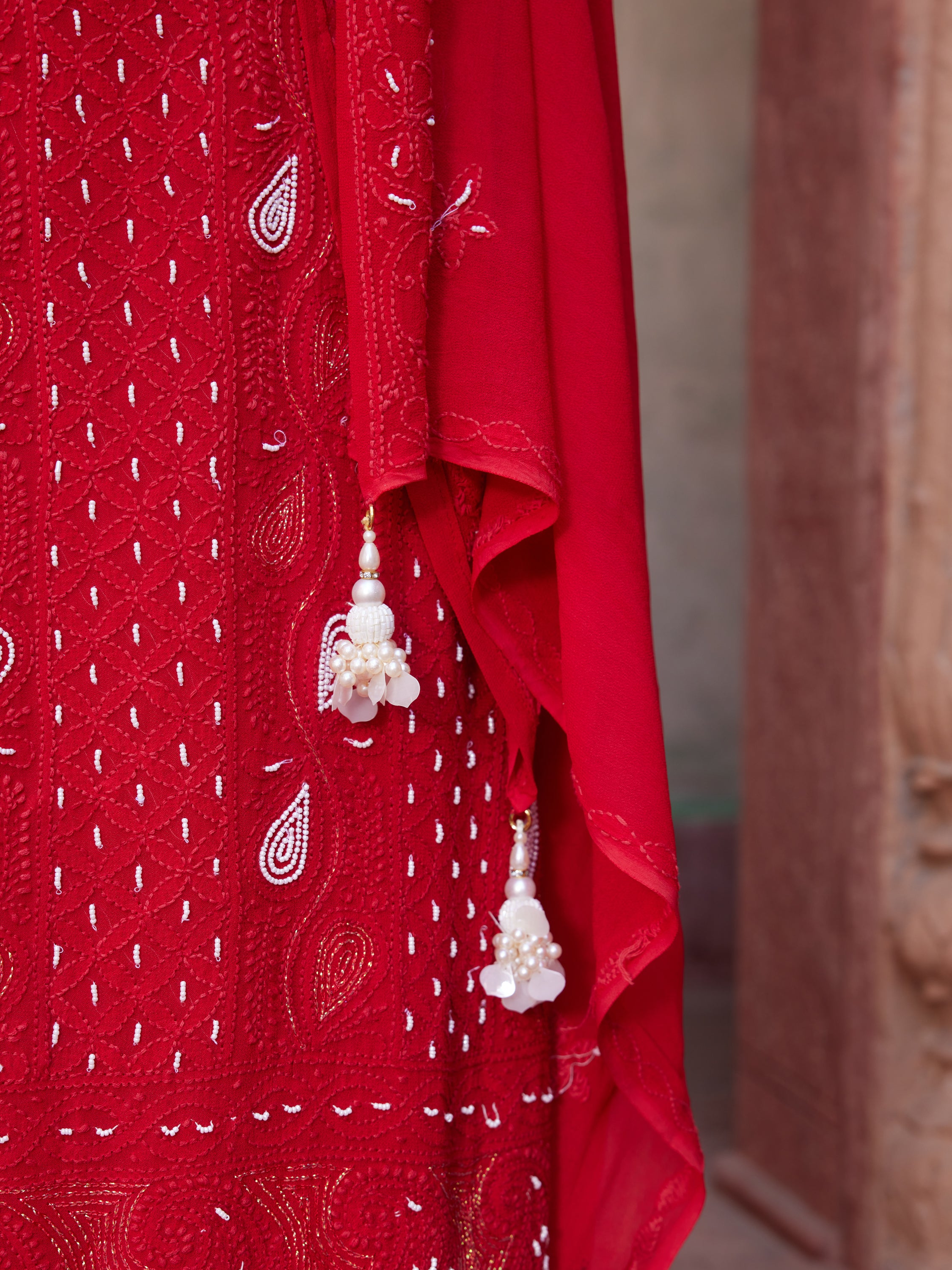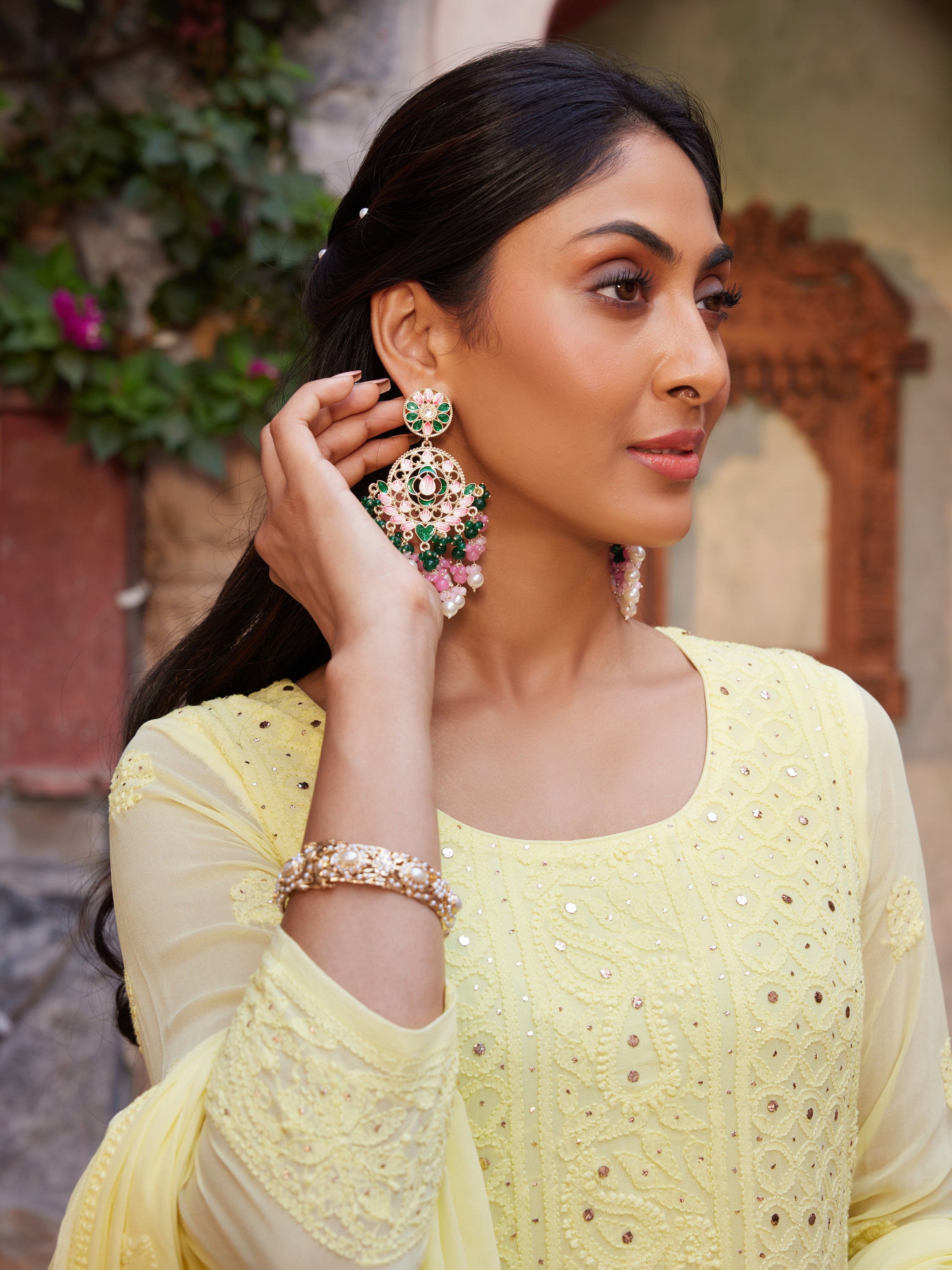What is Badla Embroidery and How Does it Work
 When it comes to traditional embroidery, Badla work stands out as a shimmering gem. This vintage craft has been passed down through generations, adorning textiles with intricate patterns and designs. here, we'll explore the world of Badla work, its history, techniques, and the effect it holds.
When it comes to traditional embroidery, Badla work stands out as a shimmering gem. This vintage craft has been passed down through generations, adorning textiles with intricate patterns and designs. here, we'll explore the world of Badla work, its history, techniques, and the effect it holds.
A look into History of badla work
Badla work find its roots in the heart of India, in the state of Rajasthan. Its origins can be traced back to the Mughal era when artisans in the royal courts with the art of fabrics with metallic thread. Over time, it spread across the country, each region adding its unique twist to the craft
Technique:
Badla work is characterized by its use of metallic thread, often silver or gold, to create intricate patterns on fabrics like silk, chiffon, and georgette. The process involves carefully weaving these metallic threads into the fabric, creating patterns that catch and reflect light.
Needlework: Artisans use specialized needles to ensure details in their embroidery. Each stitch is carefully crafted, and the metallic thread is woven in a way that it remains secure.
Intricate Patterns: The charm of Badla work is its detailed and elaborate patterns. From floral motifs to different designs, these patterns often tell unique stories.
Metallic work: The use of metallic threads not only adds a touch of magic but also makes the work stand out. The threads can be flat, round, or coiled, offering a variety of textures.
Preserving a Legacy
In a world that's constantly changing, it's good to see that Badla work continues to thrive. Artisans and designers are innovating by blending traditional techniques with modern fashion sensibilities, ensuring that this art form remains appreciated.
Summing up:
Badla work is not just embroidery; it's a glimpse into India's rich cultural tapestry. Its history, techniques, and cultural significance make it an art form worth celebrating and preserving. Whether you wear a Badla work saree to a special occasion or admire it in a museum, you're connecting with a tradition that continues to rock and inspire.



